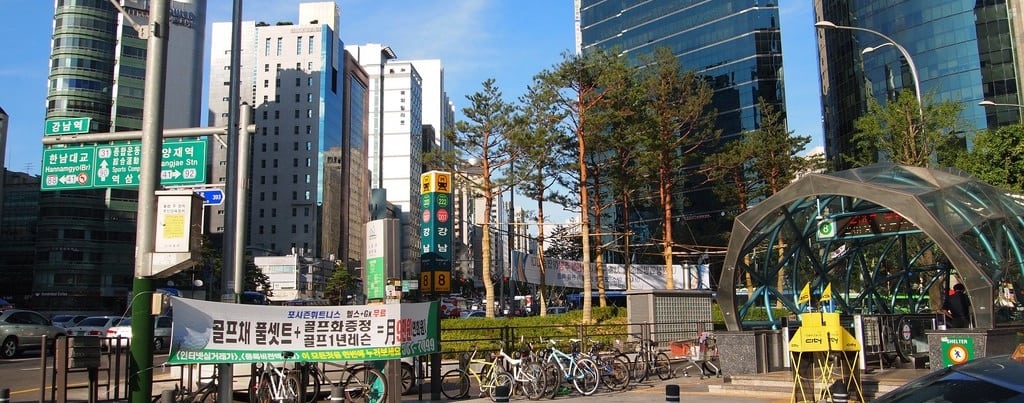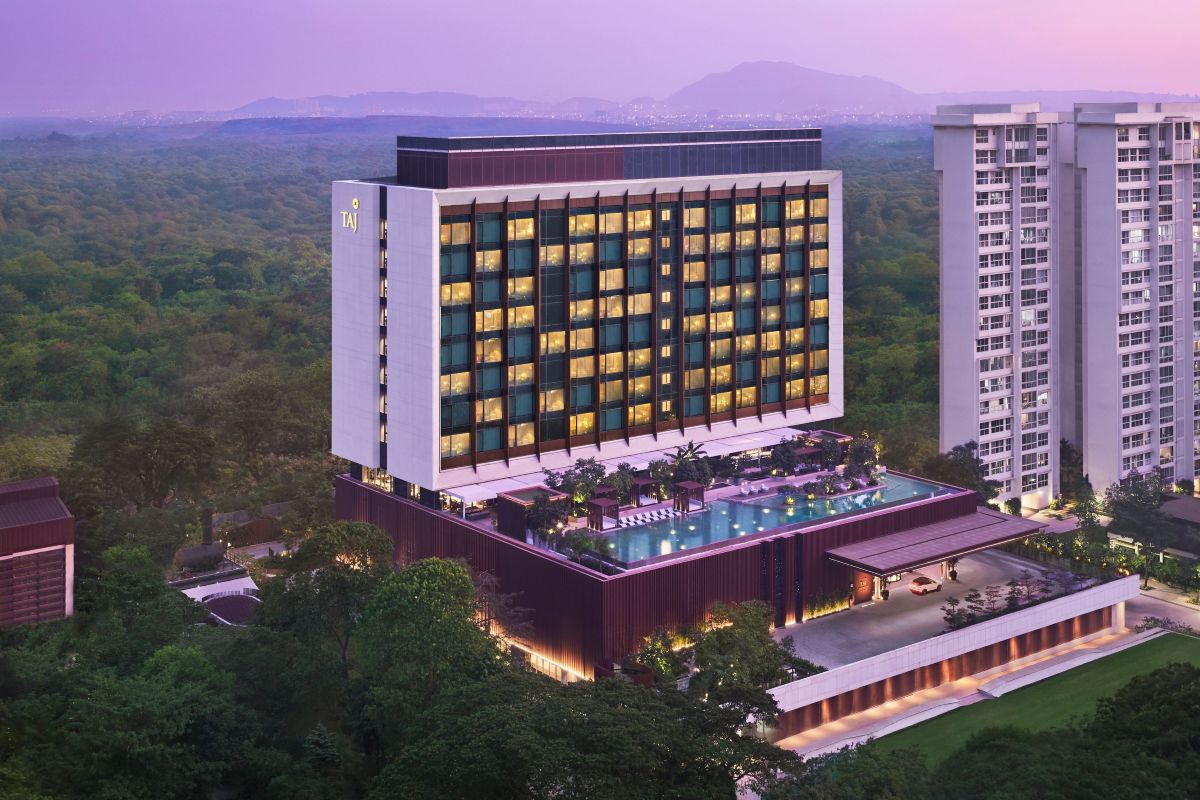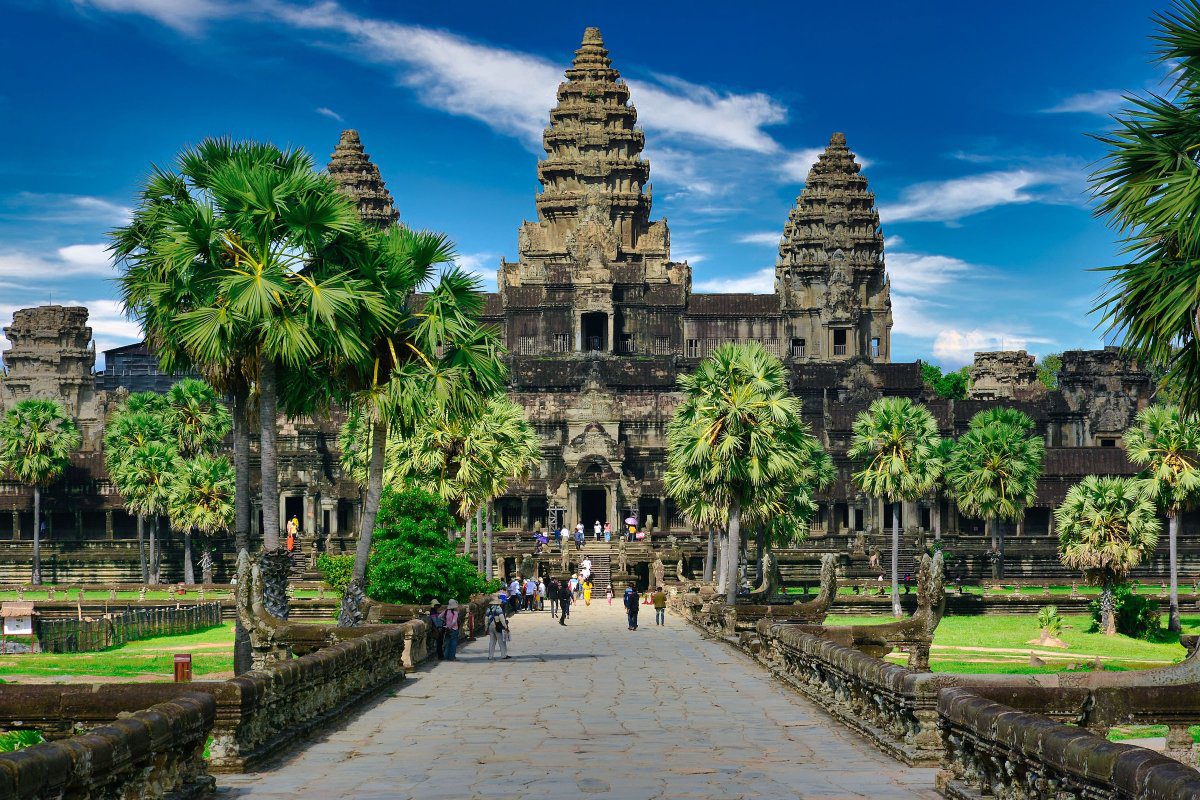K-Pop drove tourists to Gangnam for years before Psy made it a worldwide destination

Skift Take
"Gangland style is about Seoul's criminal underworld," one friend informed me with grave authority. "There's a video?" another asked – she believed the dance was something her Zumba instructor had come up with. Wherever you heard it or whatever you think it means, in 2012, Gangnam Style – the annoyingly catchy song with the silly dance by Psy – catapulted South Korea into the global consciousness on a scale usually reserved for pregnant princesses. It is one of the year's most Googled search terms and the video became YouTube's most viewed of all time, topping a billion hits this month.
South Korea is hot. But most of us know little about it beyond "He-ey, sexy lady" line and the horsey hip wiggle. Which is why this month South Korean tourist officials released a YouTube guide to the real Gangnam, a video that has since had more than 400,000 hits. This is just one example of how the government and record companies are scrambling to create a tourist-friendly K-pop experience in Seoul, to ensure that current interest lasts longer than a one-hit wonder.
In a neat alley in Apgujeong – the shopping district styled as the Beverly Hills of Seoul, complete with a Rodeo Street – a group of young girls are peering excitedly into the huge windows of Cube Cafe.
"Beast might visit today," Lee Mi-Hyun tells me distractedly, craning so not to lose sight of the door. Beast, a six-member boy band also known as B2ST, is a hugely popular K-pop act, and 13-year-old Mi-Hyun and her friends are B2UTYs – fangirls of the band.
K-pop is kitschy, catchy, highly produced, seamlessly choreographed, skilfully marketed and performed by (mostly) young, unthreateningly good-looking boy and girl bands with devoted, tech-savvy followings. We in the west may have just cottoned on to it (anyone with preteen children will know better), but there is no overstating its popularity in Asia.
K-pop is part of the Korean wave: the popular culture movement also known as hallyu (encompassing music, films, soaps, video games and cartoons), which has been growing in popularity and influence since the 1990s. In 2011 alone, hallyu is said to have contributed more than £2.3bn to the South Korean economy.
K-pop's all-powerful labels are based in Apgujeong, a neighbourhood in Gangnam. But even before Psy put the area on the map, fans had been arriving in such numbers that the Cube Entertainment label opened a cafe for them in its office building.
I join about 20 fans inside Cube Cafe. They solemnly sip lattes as they inspect the racks of merchandise. There are Beast gold trainers and mugs imprinted with band members' lips, and cushions and T-shirts emblazoned with pictures of 4Minute (a hugely popular girl group, whose auburn-haired singer, Kim Hyun-a, features in the Gangnam Style video). Every time a car stops outside, all heads swivel in the hope of spotting the label's stars on their way to the dance rehearsal and vocal training studios upstairs.
"I've met them all," says barista Park Ji-su, with a touch of world-weariness, as more well-behaved fans surge meekly through the door. Is she a fan? "No," she replies, "I was hired because I speak Japanese."
Behind me, Kayok Himatashi waits patiently to be served: a huge K-pop fan, she has just flown in from Tokyo in the hope of meeting Beast. What makes the band so special?
"The standard of their dancing is so much better than Japanese groups: they practise very hard and sing very well," she says, appreciative of the K-popstars' gruelling schedule of singing, dancing and grooming classes. "And," she adds, raising a hand to hide her giggle, "they are very handsome."
More fangirls arrive but no bands, so after an hour I follow a group of them on the unofficial K-pop circuit. We walk down the narrow alley lined with boutiques, past carts selling tteokbokki, the ubiquitous gelatinous rice cakes swimming in a spicy red sauce (which taste much nicer than they sound).
Two streets over we find fangirls and fanboys hanging around Dunkin' Donuts, on the lookout for acts visiting JYP Entertainment (label of K-pop heavyweights Wonder Girls, 2AM and 2PM) across the street. There's nothing doing, so we move on to SM Entertainment (home of Super Junior, Shinee, Girls' Generation and TVXQ) two streets away. We kill time licking icing off a donut but no bands appear.
Seoul is an ancient city resplendent with Unesco-listed buildings. Its history is one of invasion and occupation. In the 20th century alone, the Japanese occupied the country for 35 years to 1945, swiftly followed by the North Koreans, who were bombed out by the Americans in 1950. (The bridge across the Han river, over which General MacArthur marched his troops, still stands, pocked with bullet holes.)
But rapid industrialisation after the Korean war, helped by the 1988 Olympics and the 2002 World Cup, saw South Korea transform into a hi-tech, global economic power. Nowhere is this more apparent than in Gangnam. Back out on Apgujeong's main thoroughfare, I dodge pairs of young women shopping: their linked arms bristle with designer carrier bags like extravagant charm bracelets. The only things more numerous than the designer stores (Fendi, Jimmy Choo, Louis Vuitton) are the western coffee chains and the plastic surgeons' clinics.
It's easy to see why Psy would parody the place, but irony gets lost on the crowded streets. Organised tours of Gangnam, described in the most recent Lonely Planet guide as "more noted for its numerous bars and restaurants than its tourist sights", still focus on sights such as the COEX Mall (Asia's largest underground shopping centre and home of the excellent Kimchi Museum) and the huge Bongeunsa Buddhist temple across the street.
Hotel rooms are thin on the ground in Seoul. Visitor numbers to Korea have increased by 15% every year since 1988, and last summer the tourism office announced a shortage of about 26,500 rooms. As a result, there has been a surge in Gangnam locals renting out their flats from about £40 a night (check out the BnBhero.com website).
There are also yeogwan (traditional inns) and love motels, though the line between the two is often blurred. Korean love motels are more Vegas than vulgar, and many have fabulous themed rooms and swimming pools. Nice ones around Insadong station cost from £30 a night, though most don't take bookings. The Sheel Motel by the station is one of the area's classics.
For a something chic, IP Boutique hotel in Itaewon (ipboutiquehotel.com) charges from £80 a night. Or there's Lady Gaga's fave, the W, out at Walkerhill (starwoodhotels.com/whotels, rooms from £185).
A number of new hotels are opening in Gangnam in 2013, and the South Korean ministry of culture and tourism is planning a dedicated K-pop stadium and Hallyuwood Walk of Fame there – there's even talk of a statue of Psy. It is staging slightly bonkers K-pop events as part of a "creative ideas campaign to welcome foreign tourists visiting Korea". Advertised on Twitter and the Tourist Office website, free events include dance classes, Gangnam Style flashmobs, hairstyling demonstrations and a weekly K-pop chart show (think Top of the K-pops).
Today's hot ticket is a free concert at the Olympic Park. Easily reached on Seoul's efficient underground network, the park is a sprawling green space dotted with more than 200 giant sculptures and home to the Soma Museum of Art. When excavations started here for the 1988 Olympics, vast third-century earthworks were discovered. Now fully restored, the elevated fortification runs for more than a mile and a half through the park, offering fantastic views of the mountains between Seoul and North Korea, 40 miles to the north.
Security is tight in the open-air plaza: boy band Infinite is headlining, and the place is heaving with fangirls. Ticket holders wear numbered bibs to gain access to their precious seats; some pay to be photographed next to lifesize cardboard cut-outs of their idols. Outside the barriers, tickletless fangirls wrap themselves against the cold in homemade "Infinite 4Ever" banners. (Summers in Seoul can hit 40C but winters plunge as low as -15C.) The atmosphere is electric – imagine Beatlemania or the first time Take That split up.
I find myself seated next to a group of foreign students, all here studying Korean, all long-time K-pop fans.
"It's the gateway drug," laughs Lavinia Pletosu, a 22-year-old from Italy. "The more you get into the music, the more you want to know about the language, the history, the culture, the food ..."
Canadian Mary Zhang agrees: "When I was 15, I wanted to learn Korean so I could write to singer Kim Junsu: he's a total god. After years of listening to K-pop and practising the moves, though, I wanted to come and learn about the country."
Suddenly the whole place goes off like a car alarm, as Infinite take to the stage. Slender and curiously asexual, the seven twentysomething men appear unruffled by the wall of screams that greets them. In their neat brown suits, they look like trainee accountants. That's until the music starts. Infinite jerk into formation, bursting into song while performing a complicated, synchronised dance routine with almost eerie precision.
"It's the Scorpion," shrieks a voice behind me. I turn to ask what they mean, only to see the entire (mostly western) audience, doing the dance and singing along at the tops of their lungs in word-perfect Korean.
If this is K-pop, Korea has a global hit on its hands.
• Flights were provided by Korean Air (020-7495 8641, koreanair.com), which flies from Heathrow to Seoul from £649 return. For more information on K-pop events, see visitkorea.or.kr. One of the best K-pop blogs is eatyourkimchi.com
![]()




